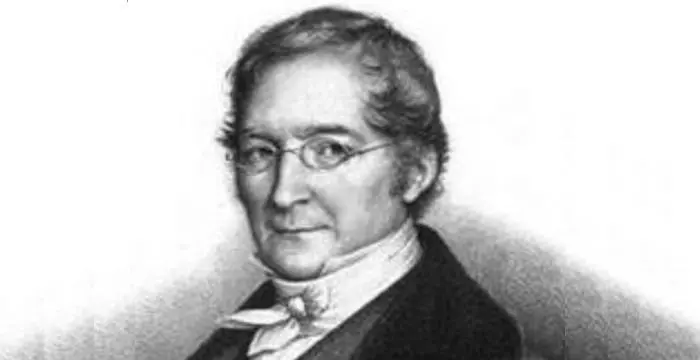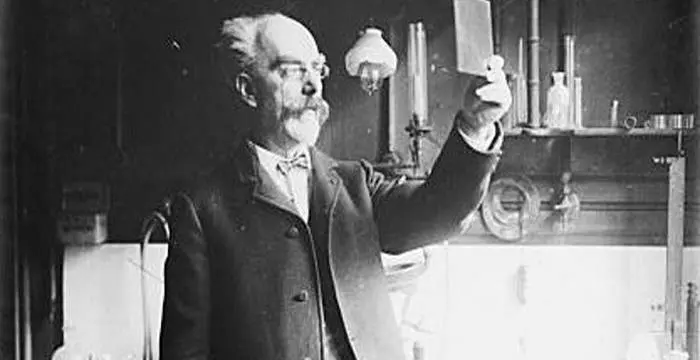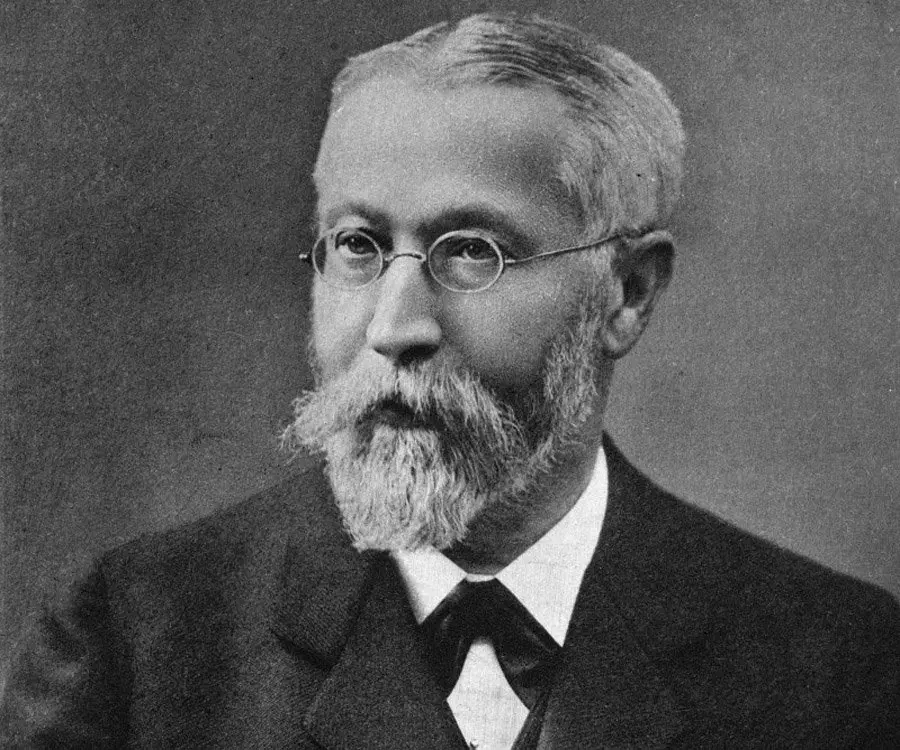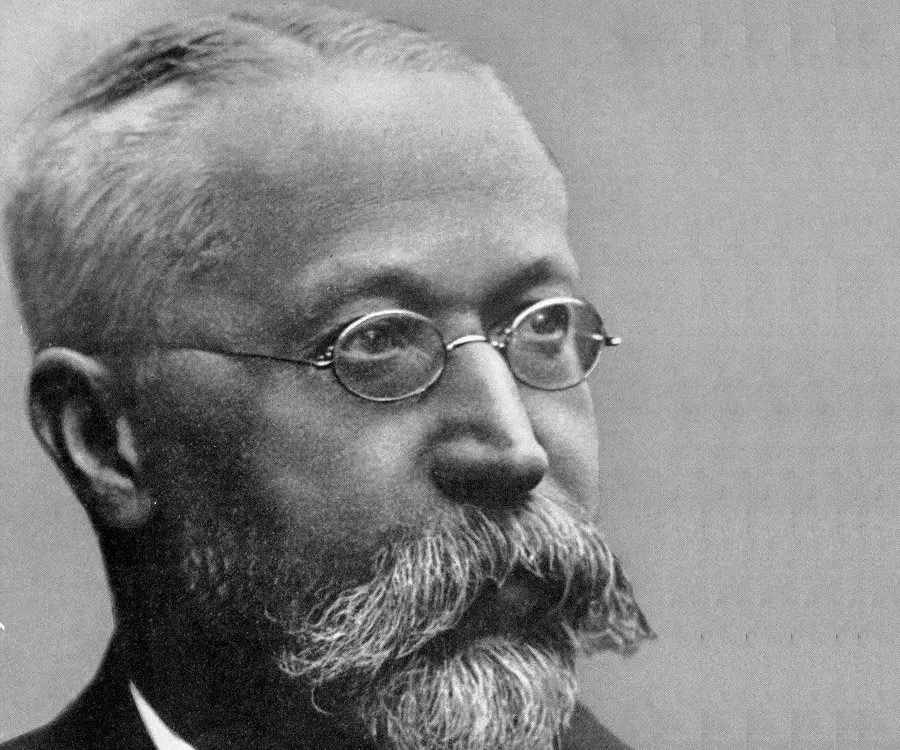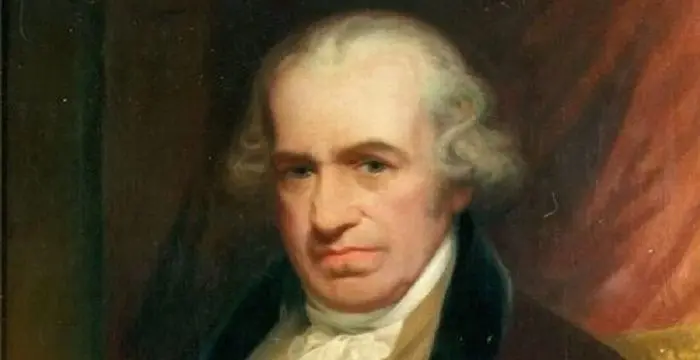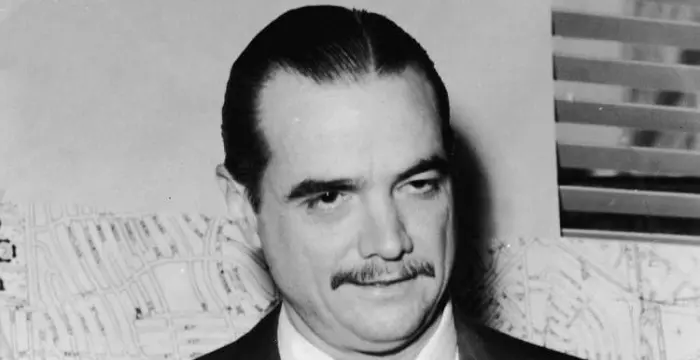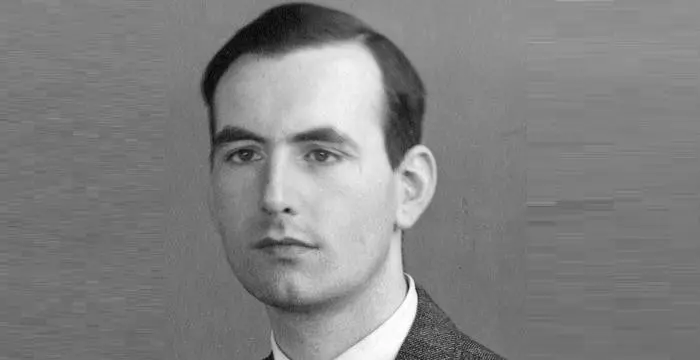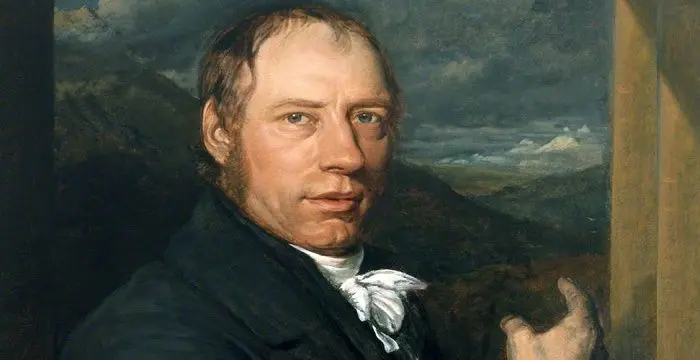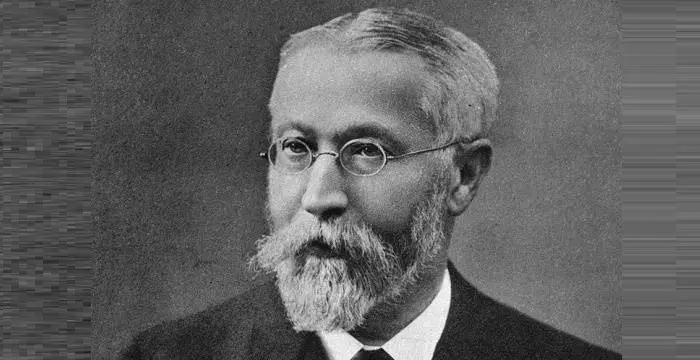
Karl Ferdinand Braun - Inventors, Timeline and Childhood
Karl Ferdinand Braun's Personal Details
Karl Ferdinand Braun was a German physicist and inventor who received the Nobel Prize for Physics in 1909
| Information | Detail |
|---|---|
| Birthday | June 6, 1850 |
| Died on | April 20, 1918 |
| Nationality | German |
| Famous | Inventors & Discoverers, Physicists, Inventors, Physicists |
| Spouses | Amelie Buhler |
| Universities |
|
| Discoveries / Inventions |
|
| Birth Place | Fulda, Electorate of Hessen, Germany |
| Gender | Male |
| Father | Johan Konrad Braun |
| Mother | Franziska Gohring Braun |
| Sun Sign | Gemini |
| Born in | Fulda, Electorate of Hessen, Germany |
| Famous as | German Physicist & Inventor |
| Died at Age | 67 |
// Famous Physicists
Walter Kohn
Nobel Laureate Walter Kohn was an Austrian-born American theoretical chemist and physicist. Check out this biography to know about his childhood, life, achievements, works & timeline.
Amedeo Avogadro
Amedeo Avogadro was an Italian scientist who formulated what is now known as Avogadro's law. This biography of Amedeo Avogadro provides detailed information about his childhood, life, achievements, works & timeline.
Gabriel Lippmann
Gabriel Lippmann was a French physicist and inventor. He was awarded the Nobel Prize in Physics in 1908. This biography of Lippmann provides detailed information about his childhood, life, research, achievements and timeline.
Karl Ferdinand Braun's photo
Who is Karl Ferdinand Braun?
Karl Ferdinand Braun was a German physicist and inventor who received the Nobel Prize for Physics in 1909. He shared the prize with another inventor and scientist Guglielmo Marconi. He was awarded the Nobel Prize for his work in the development of the technologies used in television and radio. He became interested in experimenting with wireless telegraphy at an early age. The distance that could be covered by the wireless technology developed by Marconi was about 15 kilometers only. The antenna was connected directly to the power circuit of the transmitter. Braun developed an antenna that could increase the distance by many more kilometers over which wireless transmissions could be made. He is also famous for the creation of the Cathode Ray Tube or CRT used in the design of TV screens and computer monitors later. He designed ways to control the cathode rays by changing the voltage to obtain a definite pattern on the fluorescent screen which had not been possible earlier. The oscilloscope was also his invention which is used in electrical and electronic laboratories as an instrument for measuring different electrical parameters. He also invented the first ‘cat’s whisker diode’ which led to the invention of crystal receivers for radios.
// Famous Inventors
Thomas Newcomen
Thomas Newcomen was a British inventor who developed the world’s first steam engine. Browse through this biography to learn in details about his life, career, works and timeline.
Erno Rubik
The famous inventor and educationist, Erno Rubik is known world-wide for his invention the ‘Rubik’s Cube’. To know more about the childhood, profile, timeline and career of this famous architect-inventor read on.
Howard Hughes
Howard Hughes was an American aviator, business tycoon, philanthropist and also a film maker. This biography explores his childhood, career, achievements and timeline.
Childhood & Early Life
Karl Ferdinand Braun was born on June 6, 1850 in Fulda, Germany to Johan Konrad Braun and Franziska Gohring Braun. He was the fourth child of his parents.
He did his initial education at the local grammar school in Fulda.
After completing high school he studied chemistry and mathematics at the ‘University of Marburg’.
He completed his PhD in physics in 1872 from the ‘University of Berlin’.
Thereafter he worked as a graduate assistant at the Wurzburg University.
Career
In 1874 Karl Ferdinand Braun discovered that point-contact semiconductors were able to rectify electrical currents from alternating to direct current.
In 1874 he became a member of the teaching faculty at the ‘St. Thomas Gymnasium’ in Leipzig.
He was appointed an ‘Extraordinary Professor of Theoretical Physics’ at the Marburg University in 1877.
He joined the Strasbourg University also as an ‘Extraordinary Professor of Physics’ in 1880.
He joined the ‘Polytechnic School’ in Karlsruhe in 1883 to teach physics.
He was invited to build a new ‘Physics Institute’ by the ‘University of Tubingen’ in 1885.
In 1895 he returned to become a professor of physics at the ‘University of Strasbourg’ and also became the director of the ‘Physical Institute’ at the university.
He built the first Cathode Ray Tube or CRT in 1897 and also the CRT oscilloscope. For almost one century CRTs were used in TV sets and computer monitors until they were replaced by flat-screen LCD screens, LED screens and finally Plasma screens in the 21st century.
He became a member of a group of scientists who were working on the development of wireless and radio technology in 1897.
He became fully dedicated to solving the problems in wireless telegraphy in 1898 and continued to work on the issue for the next few years.
In 1898 he discovered the ‘cat’s whisker diode’ or crystal rectifier that could transform alternating current to direct current. This helped to increase the distance over which wireless devices could work.
He applied for many patents on his designs related to wireless telegraphy in 1899.
He had started experimenting with wireless telegraphy when he was with the Strasbourg University and was able to connect to the city of Mutzig 42 kilometers away very soon by wireless telegraphy. On September 24, 1900 he was able to set up a wireless telegraphy connection between Cuxhaven in the North Sea coast and the island of Heligoland about 62 kilometers away. Wireless communications between Cuxhaven and light vessels plying on the Elbe River also became possible during this time with his help.
He was instrumental in the execution of the first trans-Atlantic wireless transmission in 1901 which led to the setting up of the wireless telegraphy industry.
In 1902 he was successful in receiving messages with the help of the ‘inclined beam antenna’.
The ‘phased array antenna’ was discovered by him in 1905. This was a combination of three antennas arranged one behind the other for transmitting a directional signal. The radar and the smart antennas were developed later with this technology.
Before the start of the First World War, he was called to the US in 1914 to stand as witness in favor of the wireless station operated by the ‘Atlantic Communication Company’ in Sayville, New York against a law suit filed by the ‘American Marconi Corporation’ which was owned by the British Government.
He could not go back to Germany as the First World War had broken out by then and the US government had joined the war. He was allowed to move about freely inside Brooklyn, New York. He could not carry out any more experiments as he did not have access to any laboratory in New York. He stayed in the house of one of his sons, Konrad till his death.
Major Works
His patented theories have been published in the books titled as ‘Electro Telegraphy by means of Condensers and Induction Coils’ and ‘Wireless Electro Transmission of Signals over Surfaces’.
Awards & Achievements
Karl Ferdinand Braun was awarded the Nobel Prize for Physics in 1909 for his path-breaking discovery work in wireless telegraphy and television technology and inventions.
Personal Life & Legacy
He married Amelie Buhler in 1883 while working at the Polytechnic school in Karlsruhe.
He had two sons and two daughters from this marriage.
Karl Ferdinand Braun died on April 20, 1918 in Brooklyn New York, United States, before the end of the First World War.
// Famous Physicists
Henry Cavendish
Henry Cavendish was a theoretical chemist and physicist, renowned for discovery of hydrogen and calculation of the mass of earth. To know more about his childhood, profile, timeline and career read on
Walter Kohn
Nobel Laureate Walter Kohn was an Austrian-born American theoretical chemist and physicist. Check out this biography to know about his childhood, life, achievements, works & timeline.
Nikola Tesla
Nikola Tesla was a Serbian-American inventor, best known for his development of alternating current electrical systems. This biography of Nikola Tesla provides detailed information about his childhood, life, achievements, works & timeline.
Karl Ferdinand Braun's awards
| Year | Name | Award |
|---|---|---|
Other | ||
| 0 | Nobel Prize in Physics (1909) | |
Karl Ferdinand Braun biography timelines
- // 6th Jun 1850Karl Ferdinand Braun was born on June 6, 1850 in Fulda, Germany to Johan Konrad Braun and Franziska Gohring Braun. He was the fourth child of his parents.
- // 1872He completed his PhD in physics in 1872 from the ‘University of Berlin’.
- // 1874In 1874 Karl Ferdinand Braun discovered that point-contact semiconductors were able to rectify electrical currents from alternating to direct current.
- // 1874In 1874 he became a member of the teaching faculty at the ‘St. Thomas Gymnasium’ in Leipzig.
- // 1877He was appointed an ‘Extraordinary Professor of Theoretical Physics’ at the Marburg University in 1877.
- // 1880He joined the Strasbourg University also as an ‘Extraordinary Professor of Physics’ in 1880.
- // 1883He joined the ‘Polytechnic School’ in Karlsruhe in 1883 to teach physics.
- // 1883He married Amelie Buhler in 1883 while working at the Polytechnic school in Karlsruhe.
- // 1885He was invited to build a new ‘Physics Institute’ by the ‘University of Tubingen’ in 1885.
- // 1895In 1895 he returned to become a professor of physics at the ‘University of Strasbourg’ and also became the director of the ‘Physical Institute’ at the university.
- // 1897He built the first Cathode Ray Tube or CRT in 1897 and also the CRT oscilloscope. For almost one century CRTs were used in TV sets and computer monitors until they were replaced by flat-screen LCD screens, LED screens and finally Plasma screens in the 21st century.
- // 1897He became a member of a group of scientists who were working on the development of wireless and radio technology in 1897.
- // 1898He became fully dedicated to solving the problems in wireless telegraphy in 1898 and continued to work on the issue for the next few years.
- // 1898In 1898 he discovered the ‘cat’s whisker diode’ or crystal rectifier that could transform alternating current to direct current. This helped to increase the distance over which wireless devices could work.
- // 1899He applied for many patents on his designs related to wireless telegraphy in 1899.
- // 24th Sep 1900He had started experimenting with wireless telegraphy when he was with the Strasbourg University and was able to connect to the city of Mutzig 42 kilometers away very soon by wireless telegraphy. On September 24, 1900 he was able to set up a wireless telegraphy connection between Cuxhaven in the North Sea coast and the island of Heligoland about 62 kilometers away. Wireless communications between Cuxhaven and light vessels plying on the Elbe River also became possible during this time with his help.
- // 1901He was instrumental in the execution of the first trans-Atlantic wireless transmission in 1901 which led to the setting up of the wireless telegraphy industry.
- // 1902In 1902 he was successful in receiving messages with the help of the ‘inclined beam antenna’.
- // 1905The ‘phased array antenna’ was discovered by him in 1905. This was a combination of three antennas arranged one behind the other for transmitting a directional signal. The radar and the smart antennas were developed later with this technology.
- // 1909Karl Ferdinand Braun was awarded the Nobel Prize for Physics in 1909 for his path-breaking discovery work in wireless telegraphy and television technology and inventions.
- // 1914Before the start of the First World War, he was called to the US in 1914 to stand as witness in favor of the wireless station operated by the ‘Atlantic Communication Company’ in Sayville, New York against a law suit filed by the ‘American Marconi Corporation’ which was owned by the British Government.
- // 20th Apr 1918Karl Ferdinand Braun died on April 20, 1918 in Brooklyn New York, United States, before the end of the First World War.
// Famous Inventors & Discoverers
Nikola Tesla
Nikola Tesla was a Serbian-American inventor, best known for his development of alternating current electrical systems. This biography of Nikola Tesla provides detailed information about his childhood, life, achievements, works & timeline.
Thomas Newcomen
Thomas Newcomen was a British inventor who developed the world’s first steam engine. Browse through this biography to learn in details about his life, career, works and timeline.
Erno Rubik
The famous inventor and educationist, Erno Rubik is known world-wide for his invention the ‘Rubik’s Cube’. To know more about the childhood, profile, timeline and career of this famous architect-inventor read on.
Ernst Ruska
Ernst Ruska was a German physicist who invented the electron microscope. Check out this biography to know about his childhood, life, achievements, works & timeline.
Howard Hughes
Howard Hughes was an American aviator, business tycoon, philanthropist and also a film maker. This biography explores his childhood, career, achievements and timeline.
Richard Trevithick
Richard Trevithick was a British inventor who was the pioneer of steam-powered road and rail transport. Check out this biography to know about his childhood, family life, achievements and fun facts about him.
Karl Ferdinand Braun's FAQ
What is Karl Ferdinand Braun birthday?
Karl Ferdinand Braun was born at 1850-06-06
When was Karl Ferdinand Braun died?
Karl Ferdinand Braun was died at 1918-04-20
Where was Karl Ferdinand Braun died?
Karl Ferdinand Braun was died in Brooklyn, New York, U.S.
Which age was Karl Ferdinand Braun died?
Karl Ferdinand Braun was died at age 67
Where is Karl Ferdinand Braun's birth place?
Karl Ferdinand Braun was born in Fulda, Electorate of Hessen, Germany
What is Karl Ferdinand Braun nationalities?
Karl Ferdinand Braun's nationalities is German
Who is Karl Ferdinand Braun spouses?
Karl Ferdinand Braun's spouses is Amelie Buhler
What was Karl Ferdinand Braun universities?
Karl Ferdinand Braun studied at Humboldt University of Berlin, University of Marburg
What is Karl Ferdinand Braun's inventions/discoveries?
Cathode Ray Tube, Cat's Whisker Diode was invented (or discovered) by Karl Ferdinand Braun
Who is Karl Ferdinand Braun's father?
Karl Ferdinand Braun's father is Johan Konrad Braun
Who is Karl Ferdinand Braun's mother?
Karl Ferdinand Braun's mother is Franziska Gohring Braun
What is Karl Ferdinand Braun's sun sign?
Karl Ferdinand Braun is Gemini
How famous is Karl Ferdinand Braun?
Karl Ferdinand Braun is famouse as German Physicist & Inventor

